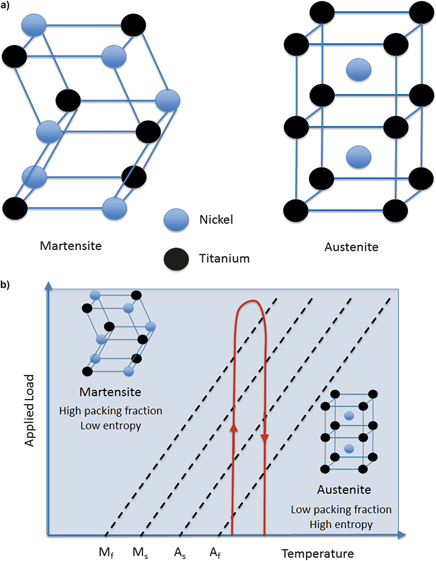Crossref Citations
This article has been cited by the following publications. This list is generated based on data provided by
Crossref.
Wang, F.
Li, B.
Ou, Y.
Liu, L. F.
Peng, C. Z.
Wang, Z. S.
and
Wang, W.
2016.
Giant room temperature elastocaloric effect of PbTiO3 ferroelectric materials with 90° domain structure.
RSC Advances,
Vol. 6,
Issue. 74,
p.
70557.
Liu, Jian
Zhao, Dewei
and
Li, Yang
2017.
Exploring Magnetic Elastocaloric Materials for Solid-State Cooling.
Shape Memory and Superelasticity,
Vol. 3,
Issue. 3,
p.
192.
Patel, Satyanarayan
Chauhan, Aditya
Madhar,
Niyaz Ahamad
Ilahi, Bouraoui
and
Vaish, Rahul
2017.
Flexoelectric Induced Caloric Effect in Truncated Pyramid Shaped Ba0.67Sr0.33TiO3 Ferroelectric Material.
Journal of Electronic Materials,
Vol. 46,
Issue. 7,
p.
4166.
Patel, Satyanarayan
Chauhan, Aditya
Vaish, Rahul
and
Lynch, Christopher S.
2017.
Large barocaloric effect and pressure‐mediated electrocaloric effect in Pb0.99Nb0.02(Zr0.95Ti0.05)0.08O3 ceramics.
Journal of the American Ceramic Society,
Vol. 100,
Issue. 10,
p.
4902.
Xie, Zhongjian
Sebald, Gael
and
Guyomar, Daniel
2017.
Comparison of elastocaloric effect of natural rubber with other caloric effects on different-scale cooling application cases.
Applied Thermal Engineering,
Vol. 111,
Issue. ,
p.
914.
Bruno, Nickolaus M.
Karaman, Ibrahim
and
Chumlyakov, Yuriy I.
2018.
Orientation Dependence of the Elastocaloric Effect in Ni54Fe19Ga27 Ferromagnetic Shape Memory Alloy.
physica status solidi (b),
Vol. 255,
Issue. 2,
Aguilar-Ortiz, C.O.
Camarillo-García, J.P.
Vergara, J.
Álvarez-Alonso, P.
Salazar, D.
Chernenko, V.A.
and
Flores-Zúñiga, H.
2018.
Effect of solidification rate on martensitic transformation behavior and adiabatic magnetocaloric effect of Ni50Mn35In15 ribbons.
Journal of Alloys and Compounds,
Vol. 748,
Issue. ,
p.
464.
Kumar, N Pavan
Prabahar, K
Kumar, D M Raj
Palit, Mithun
Arumugam, S
and
Raja, M Manivel
2019.
Structural, microstructural and magnetocaloric properties of Gd1-xGax alloys.
Materials Research Express,
Vol. 6,
Issue. 7,
p.
076556.
Camarillo-Garcia, Juan-Pablo
Hernández-Navarro, Fernando
Soto-Parra, D.E.
Ríos-Jara, David
and
Flores-Zúñiga, Horacio
2019.
High sensitivity on caloric effects induced by stress or magnetic field in a polycrystalline Ni-Mn-In-Co-Cu shape-memory alloy.
Scripta Materialia,
Vol. 166,
Issue. ,
p.
92.
Wang, Run
Fang, Shaoli
Xiao, Yicheng
Gao, Enlai
Jiang, Nan
Li, Yaowang
Mou, Linlin
Shen, Yanan
Zhao, Wubin
Li, Sitong
Fonseca, Alexandre F.
Galvão, Douglas S.
Chen, Mengmeng
He, Wenqian
Yu, Kaiqing
Lu, Hongbing
Wang, Xuemin
Qian, Dong
Aliev, Ali E.
Li, Na
Haines, Carter S.
Liu, Zhongsheng
Mu, Jiuke
Wang, Zhong
Yin, Shougen
Lima, Márcio D.
An, Baigang
Zhou, Xiang
Liu, Zunfeng
and
Baughman, Ray H.
2019.
Torsional refrigeration by twisted, coiled, and supercoiled fibers.
Science,
Vol. 366,
Issue. 6462,
p.
216.
Kiguchi, Takanori
Kodama, Yumiko
Shimizu, Takumi
Shiraishi, Takahisa
Wakiya, Naoki
and
Konno, Toyohiko J.
2019.
Interface structure of Pb(Zr,Ti)O3/MgO(001) epitaxial thin film in early stage of Stranski–Krastanov growth mode.
Japanese Journal of Applied Physics,
Vol. 58,
Issue. SL,
p.
SLLA08.
Chaudhary, V.
Chen, X.
and
Ramanujan, R.V.
2019.
Iron and manganese based magnetocaloric materials for near room temperature thermal management.
Progress in Materials Science,
Vol. 100,
Issue. ,
p.
64.
Li, Zhenzhuang
Li, Zongbin
Yang, Jiajing
Li, Dong
Yang, Bo
Yan, Haile
Nie, Zhihua
Hou, Long
Li, Xi
Zhang, Yudong
Esling, Claude
Zhao, Xiang
and
Zuo, Liang
2019.
Large elastocaloric effect in a polycrystalline Ni45.7Co4.2Mn37.3Sb12.8 alloy with low transformation strain.
Scripta Materialia,
Vol. 162,
Issue. ,
p.
486.
Li, Zhenzhuang
Li, Zongbin
Li, Dong
Yang, Jiajing
Yang, Bo
Wang, Dunhui
Hou, Long
Li, Xi
Zhang, Yudong
Esling, Claude
Zhao, Xiang
and
Zuo, Liang
2019.
Influence of austenite ferromagnetism on the elastocaloric effect in a Ni44.9Co4.9Mn36.9In13.3 metamagnetic shape memory alloy.
Applied Physics Letters,
Vol. 115,
Issue. 8,
Li, F. B.
Li, M.
Xu, X.
Yang, Z. C.
Xu, H.
Jia, C. K.
Li, K.
He, J.
Li, B.
and
Wang, Hui
2020.
Understanding colossal barocaloric effects in plastic crystals.
Nature Communications,
Vol. 11,
Issue. 1,
Aprea, C.
Greco, A.
Maiorino, A.
and
Masselli, C.
2020.
The employment of caloric-effect materials for solid-state heat pumping.
International Journal of Refrigeration,
Vol. 109,
Issue. ,
p.
1.
Cissé, Cheikh
and
Asle Zaeem, Mohsen
2020.
On the elastocaloric effect in CuAlBe shape memory alloys: A quantitative phase-field modeling approach.
Computational Materials Science,
Vol. 183,
Issue. ,
p.
109808.
Zhang, Guoyao
Li, Zongbin
Yang, Jiajing
Yang, Bo
Wang, Dunhui
Zhang, Yudong
Esling, Claude
Hou, Long
Li, Xi
Zhao, Xiang
and
Zuo, Liang
2020.
Giant elastocaloric effect in a Mn-rich Ni44Mn46Sn10 directionally solidified alloy.
Applied Physics Letters,
Vol. 116,
Issue. 2,
Coativy, Gildas
Haissoune, Hiba
Seveyrat, Laurence
Sebald, Gaël
Chazeau, Laurent
Chenal, Jean-Marc
and
Lebrun, Laurent
2020.
Elastocaloric properties of thermoplastic polyurethane.
Applied Physics Letters,
Vol. 117,
Issue. 19,
Khan, Muhammad Tahir
Hassan, Qadeer Ul
and
Xiaoqi, Liao
2021.
Effect of Strain Rate and Measuring Temperature on Elastocaloric Effect and Multi-caloric Properties of Co37.5 Ni34.5 Al28 Paramagnetic Shape Memory Alloy.
Transactions of the Indian Institute of Metals,
Vol. 74,
Issue. 12,
p.
3163.
